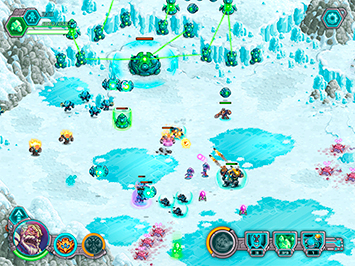

It is also noteworthy that transdifferentiation, which has recently attracted attention for shedding light on how to reprogram cells, exists in both groups of invertebrates with simple anatomy and complex morphology. In addition, unlike vertebrates, in many marine invertebrates, stem cells proliferate within the animal, meaning that they do not have a niche for their stem cells. Studies have shown marine invertebrate stem cells are mostly multipotent and pluripotent, but vertebrate stem cells are mostly oligopotent and unipotent. They are involved in aging and regeneration processes, including whole-body regeneration. Marine stem cells play key roles in the biology of aquatic invertebrates. These stem cells allow marine invertebrates to produce large numbers of bioactive molecules.

Īquatic invertebrates have several stem-cell types. The following are among the important research findings on these creatures: phagocytosis in starfish larvae biological chimeras in corals the importance of sea urchins for the molecular understanding of the basis of evolutionary biology, including gene monitoring networks and controlling molecular proliferation, which led to the discovery of cyclin the primary safety in organisms with the colony (sponges, hydrozoans, corals, urochordates, and bryozoans) flexibility in the development and use of aquatic worms for regenerative research and the discovery of a green fluorescent protein in cnidarians. They have been used as laboratory animals for more than 150 years and have helped to further explain various biological complexities. These organisms constitute the widest diversity on earth, with more than 2,000,000 species (95% of the total biodiversity of animals). They have a variety of organisms with simple structures, such as sponges and cnidarians to very complex ones such as mollusks, crustaceans, echinoderms, and protochordates. Marine invertebrates comprise a wide range of marine species with diverse phylogenetic branches. To sum up, anti-Oct4 antibodies conjugated with iron NPs not only have the potential for identifying proliferating stem cells in different cell culture conditions of sea anemone and mouse cell cultures but also has the potential to be used for in vivo MRI tracking of marine proliferating cells. Next, anti-Oct4 antibodies conjugated with iron NPs were injected into a brittle star, and proliferating cells were tracked by MRI. The presence of iron-NPs imaged with the light microscope was confirmed by iron staining using Prussian blue stain. For this purpose, 106 cells of each type were exposed to NP-conjugated antibodies and their affinity to antibodies was confirmed by an epi-fluorescent microscope. Their affinity to the cell surface marker in fresh and saltwater conditions was confirmed using two types of cells, murine mesenchymal stromal/stem cell culture and sea anemone stem cells. Next, the Alexa Fluor anti-Oct4 antibody was conjugated with as-synthesized NPs. In the first phase, iron NPs were fabricated, and their successful synthesis was confirmed using FTIR spectroscopy.

This study suggests antibody-conjugated iron nanoparticles (NPs), which are detectable with MRI for in vivo tracking, to detect stem cell proliferation using the Oct4 receptor as a marker of stem cells. Labeling stem cells with magnetic particles provides a non-invasive, in vivo tracking method using MRI. Unlike vertebrates, including humans, one of the challenges in identifying and tracking invertebrate stem cells is the lack of a specific marker. Marine invertebrates are multicellular organisms consisting of a wide range of marine environmental species.


 0 kommentar(er)
0 kommentar(er)
